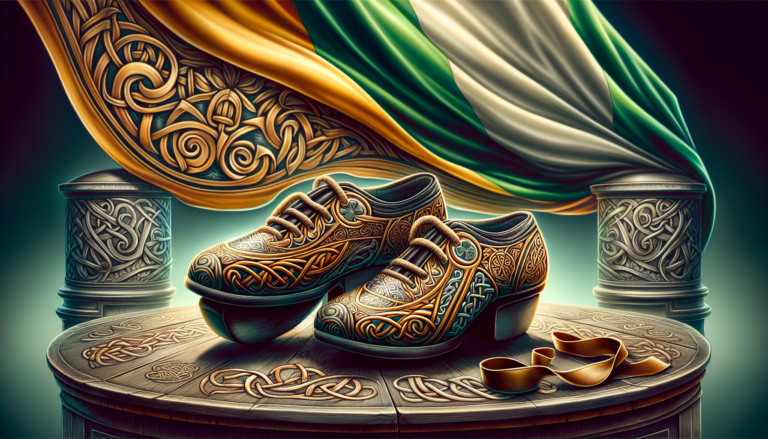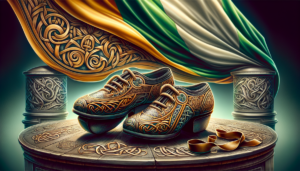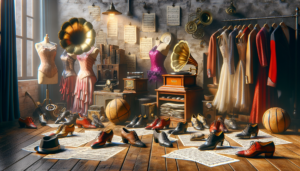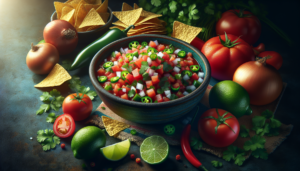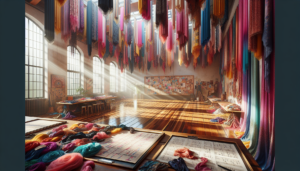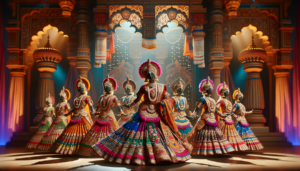Irish dance is a vibrant and captivating art form that has enchanted audiences around the world. With its rapid footwork, precise movements, and lively music, Irish dance has become a beloved symbol of Irish culture and heritage. From the energetic performances of Riverdance to the community celebrations of St. Patrick’s Day, Irish dance continues to inspire and entertain people of all ages.
In this article, we will delve into the rich history of Irish dance, explore the different styles and techniques, and discover the impact of Irish dance on modern culture. Whether you are a seasoned dancer or simply curious about this fascinating art form, join us on a journey through the world of Irish dance.
The Rich History of Irish Dance
Origins and Evolution
The origins of Irish dance can be traced back centuries, with influences from various European dance traditions. Over time, Irish dance evolved into a distinct art form, characterized by its intricate footwork and upright posture. The dance was often performed at social gatherings and celebrations, serving as a means of expression and cultural identity.
As Irish dance gained popularity, it began to spread beyond the shores of Ireland. Emigrants brought their love for dance to new lands, preserving and promoting their cultural heritage. The evolution of Irish dance also saw the emergence of different styles and techniques, each with its own unique characteristics and charm.
Cultural Significance
Irish dance holds a special place in the hearts of the Irish people and has become an integral part of their cultural identity. It serves as a means of preserving and celebrating Irish heritage, connecting generations through the power of movement and music.
The cultural significance of Irish dance extends beyond the borders of Ireland. It has garnered global appreciation and recognition, with audiences around the world captivated by the skill, energy, and passion of Irish dancers. Irish dance has become a symbol of Ireland’s rich cultural tapestry, showcasing the country’s vibrant traditions and artistic expressions.
Different Styles of Irish Dance
Step Dancing
Irish step dancing is perhaps the most well-known style of Irish dance. It is characterized by rapid and precise footwork, with the upper body remaining largely stationary. Step dancers perform intricate patterns and rhythms, creating a mesmerizing display of agility and coordination.
The history of step dancing can be traced back to the 18th and 19th centuries, where it was commonly performed in social settings and competitions. The style gained international acclaim with the rise of shows like Riverdance, which showcased the incredible skill and artistry of Irish step dancers.
Set Dancing
Set dancing is another traditional style of Irish dance that involves a group of dancers performing choreographed figures and formations. It is often performed to live music and is known for its social and inclusive nature.
Set dancing techniques involve coordinated movements and patterns, with dancers interacting and moving in sync with one another. The style encourages a sense of community and camaraderie, as dancers come together to celebrate their shared love for Irish dance.
Ceili Dancing
Ceili dancing is a popular form of group dancing in Ireland, often performed at social gatherings and events. It involves a set of predetermined dances, with dancers forming lines, circles, or squares.
Ceili dancing is known for its lively and energetic nature, with dancers performing a variety of steps and movements to the rhythm of traditional Irish music. It is a style that encourages participation and brings people of all ages and skill levels together in a joyful and inclusive atmosphere.
Techniques and Training in Irish Dance
Basic Techniques
Irish dance techniques involve a combination of precise footwork, posture, and timing. Dancers learn to execute a variety of basic steps, including the hop, skip, and jump, which form the foundation of Irish dance.
Footwork is a crucial aspect of Irish dance, with dancers focusing on creating clear and crisp sounds with their feet. They develop strength, agility, and coordination through repetition and practice, mastering the intricate patterns and rhythms that define Irish dance.
Advanced Techniques
As dancers progress in their training, they learn more advanced techniques that showcase their skill and artistry. These techniques include complex footwork patterns, high kicks, and leaps that require incredible precision and control.
Advanced Irish step dancing techniques often involve fast-paced and intricate choreography, demanding a high level of physical fitness and mental focus. Dancers may also incorporate elements of storytelling and expression into their performances, adding depth and emotion to their movements.
Training and Schools
Irish dance training typically begins at a young age, with children enrolling in dance schools or academies to learn the fundamentals of the art form. These schools provide a structured curriculum and a supportive environment for dancers to develop their skills and techniques.
As dancers progress, they may participate in competitions and performances, showcasing their abilities and competing against other talented dancers. Many schools also offer opportunities for dancers to perform in shows and events, providing valuable experience and exposure.
Famous Irish Dance Performances
Riverdance
Riverdance is perhaps the most iconic and influential Irish dance performance of all time. It first debuted as a seven-minute interval act during the Eurovision Song Contest in 1994 and quickly became a global phenomenon.
The show features a cast of talented Irish step dancers, performing to a blend of traditional Irish music and modern rhythms. Riverdance has captivated audiences around the world with its energetic choreography, stunning visuals, and powerful storytelling.
Other Notable Performances
In addition to Riverdance, there have been many other notable Irish dance performances that have left a lasting impact on audiences. These performances showcase the diversity and creativity within the Irish dance community.
Some notable performances include “Lord of the Dance,” created by Michael Flatley, which features a mix of traditional and contemporary Irish dance styles. “Feet of Flames” is another acclaimed performance that pushes the boundaries of Irish dance with its innovative choreography and stunning visual effects.
Irish Dance in Modern Culture
Community Engagement
Irish dance continues to thrive in modern culture, with communities around the world embracing and celebrating this vibrant art form. Dance schools and organizations actively engage with their local communities, hosting events and workshops to promote Irish dance and culture.
These community events provide opportunities for people of all ages to experience the joy and beauty of Irish dance firsthand. They foster a sense of connection and pride in Irish heritage, bringing people together through the shared love of dance.
St. Patrick’s Day Celebrations
St. Patrick’s Day is a significant cultural celebration that showcases the importance of Irish dance in modern society. On March 17th, people around the world come together to honor Irish culture and traditions, with Irish dance performances being a highlight of many celebrations.
| City | Event |
|---|---|
| New York City | St. Patrick’s Day Parade |
| Dublin | St. Patrick’s Festival |
| Chicago | Chicago River Dyeing and Parade |
These events provide a platform for Irish dancers to showcase their skills and share their passion with a wider audience. They also serve as a reminder of the enduring impact of Irish dance on modern culture and its ability to bring people together in celebration.
Irish Dance on Social Media
In the digital age, Irish dance has found a new platform to reach and engage audiences through social media. Dancers and enthusiasts share their performances, tutorials, and experiences on platforms like YouTube, Instagram, and TikTok.
These online communities provide a space for Irish dancers to connect, learn from one another, and showcase their talents to a global audience. Social media has also played a significant role in popularizing Irish dance, with viral videos and challenges inspiring new generations to take up the art form.
Irish dance on social media has not only increased the visibility and accessibility of the art form but has also fostered a sense of community and support among dancers worldwide.

